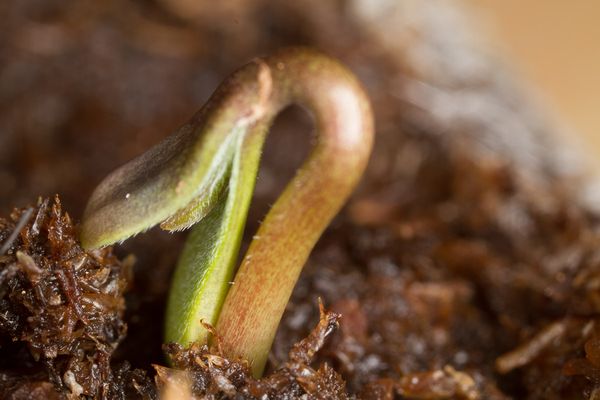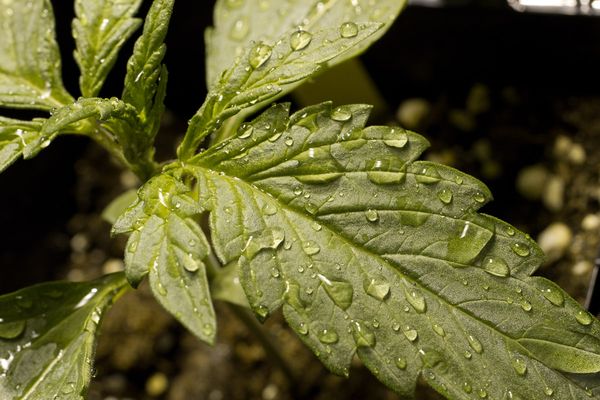- When the first rays of the spring sun starts shining, it’s the signal announcing the most awaited time of the year for some.
- The outdoor growing period is what will guarantee, for many, a full cupboard to get through the winter.
- But go with caution my gardener friend, choosing the best moment to germinate your seeds can be crucial for your crop.

Sometimes, it's hard to know when it's the best time to do it, and a very common mistake is to get carried away by the excitement of the moment and start germinating the seeds too early. Below, we give you key advice to determine the best moment depending on the region you live in. Practical and simple advice that will help you to choose the best date. Let's get started.
Advice nº1: control your eagerness
It's very common to get carried away by excitement and the eagerness to start sowing. It's normal, you've spent the whole winter awaiting this moment and now it's here you can't wait to start. This, precisely, is one of the most common mistakes in outdoor crops: sowing too early. The spring climate is very unstable and can get nasty; it's important to pay attention.
The sun is not hurried by early risers
There's a popular belief that the earlier you sow, the faster the process and the earlier the harvest. This is not true; planting earlier will not result in larger, better plants or earlier harvests. It's a good idea to control your eagerness and patiently await the best moment, when the good weather settles in.
Temperature changes can be fatal during the plant's first stages; it's weak and sensitive due to its small size, and if we don't guarantee continuous hours of sunlight and good weather, they may not grow with the necessary vigour and can even die.
In the case of autoflowering varieties, if you plant them too early you might pay for the mistake dearly. The life cycle of these varieties is very short and a bad start can have terrible consequences. As they only live for two and a half months, if the weather is bad during the first two weeks the plant will get blocked, and when the sun arrives and it's capable of restoring its vigour, it will be too late.
In both cases, with both automatic and regular or feminised seeds, we advise that you avoid the mistake of sowing too early. The difference between them is the life cycle; in the case of regular or feminised seeds, as they have more time for vegetative development, that is, a longer growth period (approximately 3 months), there is a greater margin for recovery and that initial error is not as serious.
To give you an example...
Imagine that the good weather starts, suddenly there's a scorching sun for two or three days. You put your coat away in the wardrobe and start to bring out your summer clothes; you're looking forward to the beach, the bar terraces... And you go ahead, yes, you're full of confidence and you start to germinate your marijuana seeds, because there's no point in leaving for tomorrow what you can do today. And you do it. After a week your little plants are ready to face the world, planted in their pot and outdoors, enjoying the good weather. A serious mistake.
It was all a dream, an illusion; during the spring season the weather can often turn ugly, and one week later it's pouring rain. Your plants, which have barely taken their first steps, are in a totally drenched substrate, the few roots they had managed to develop are submerged in water, the leaves don't grow and the plant is blocked. In the case of autoflowering varieties, by the time the plant recovers its vigour, it's too late, as their growth period only lasts a month (they start to flower starting on the 25th-28th day approximately) and the final result will be a disaster. In the best case scenario, you'll have a very small plant that will yield very little and of poor quality. In the worst case scenario, it will die.

If you have sown feminised or regular seeds, the growth period is tripled and instead of 4 weeks, you have 12. This gives you a bigger margin, and although they may have suffered at the beginning, there comes a time when the plants can recover and grow normally. In any event, it's always preferable to bear in mind the weather factor and germinate at the appropriate time. The less stress and suffering the plant endures, the better the final result.
Advice nº2: Take into account your region's climate
The moment to germinate your seeds varies depending on the region. Depending on where you live, we're not talking about the same weather conditions and therefore the date will also change. Although you can find a lot of information that claims to provide an appropriate date, our advice is that you don't take it as something academic, observe the weather and make sure it really is good. In any case, here are some ballpark dates that you can use as a guide:
- Mediterranean climate: The temperatures are milder and in general the germination period goes from 1 April to 30 May, though the best moment is usually in early May.
- Non-Mediterranean climate (continental/ Atlantic/ mountain): In these types of climates, germination can take place, in general, from 1 May to 30 June. The most recommended moment is usually early June.
Advice nº3: Look at how the season starts
Every season is different, it can come earlier or later. For example, as we mentioned above, in the Mediterranean climate, in general, the best time to germinate is in late April or early May. But you can find that, depending on the year, it's hot earlier than that or it may be the opposite, it might be cold at the beginning and summer extends into the months of September and October. You must pay close attention to these types of variations to be able to adapt the cycle of your crop, postponing it or bringing it forward.
If you are starting to cultivate and your knowledge on marijuana in particular and botanics in general is scarce, here's a trick: ask and observe. The same rules that apply to the cannabis plant's germination also work when growing vegetables in general. So, when you see your neighbour sowing his crops, start germinating your seeds.
Look to see if the farmers near you are starting to fill their fields with seedlings of summer vegetables. In general, they've spent their whole lives growing crops and are experts in observing and understanding meteorological signs, so when you see them at work on their peppers and tomatoes, that's the sign, the time has come. If you don't know anyone with crops, you can always go to the nearest garden centre.
Conclusion
Germinate your seeds when the sun's intensity is sufficient and stable over time; in short, when there's good weather, as simple as that. This isn't an exact science, you can't follow a fixed and immovable calendar. As we mentioned above, the key is to observe the weather, watch out for the signs and try to ride out the whims of mother nature. You must make sure that the good weather is here to stay.
Make sure that the location your plants will be in faces south; ideally your plant should receive some 12 hours of sunlight daily. Last of all, we recommend that you always use professional gardening materials.
Now that you know where to start, you have a solid foundation to start this adventure on a good footing. Have a good harvest!



Comments from our readers
Did you like this post?
Your opinion about our seeds is very important to us and can help other users a lot (your email address won't be made public).